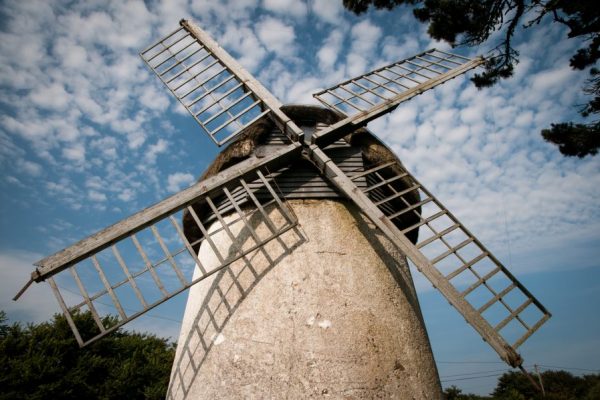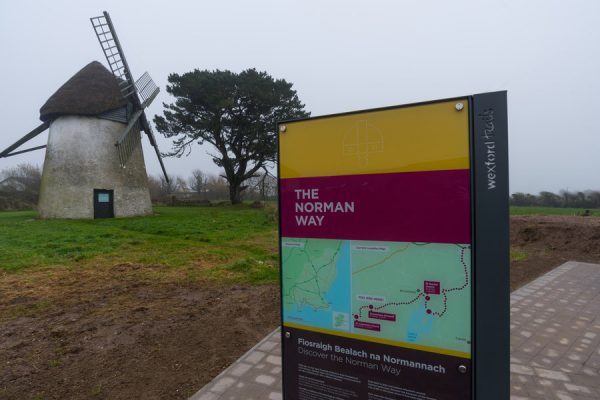The Normans introduced vertical tower windmills like this one to Ireland.
Norman Windmills
This type of mill was an alternative to the watermill, which required access to a fast flowing river in order to grind grain into flour. The use of windmills was the Norman way of producing more food locally. In medieval times, the flat and windy landscape of South Wexford was dotted with these unusual structures.
The landscape around this windmill contains evidence of an early field system. This field system may have used crop rotation, a Norman farming method, to increase the yield of grain which supplied the windmill.
Norman Inspired Food Production and Shipwrecked Timber
Tacumshane Windmill is not from Norman times, it was built in 1846. However its very existence here is the direct result of the efficient food production methods introduced to this area by the Normans.
Virtually all the wood used in Tacumshane Windmill’s internal machinery was recovered from shipwrecks found along the dangerous, southern coast of Wexford, an area of sea known by locals as ‘the graveyard of a thousand ships’.
–
To find Tacumshane Windmill…
Type these coordinates into Google: 52.20878, -6.42399
–
To the West along the Way lies… St Catherine’s Church
To the East along the Way lies… St Iberius’ Church
–




